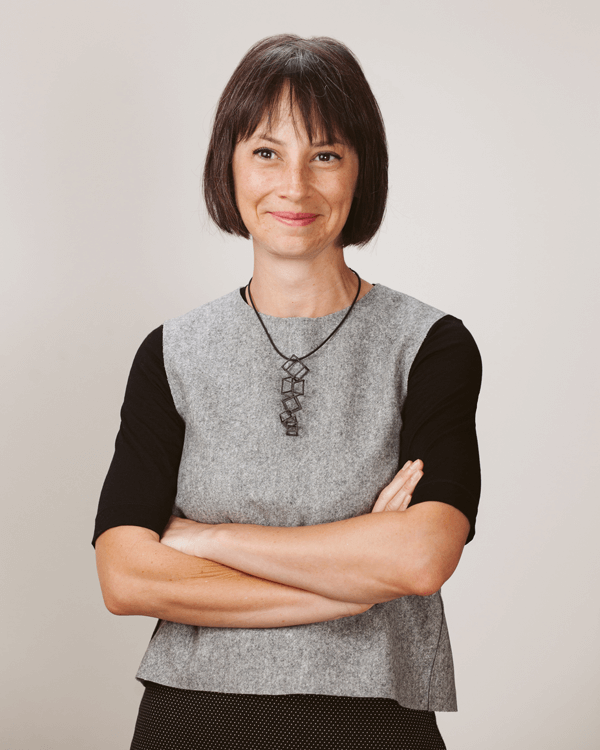Why students who want to make a real impact at work are turning to design
One of the things I enjoy most about our work at Treehouse is helping people start to see the world differently. We help organisations see their challenges, customers and possibilities through a new lens, to help them spot more of the opportunities available.
It requires a big shift in mindset, which doesn’t happen overnight, so the sooner people start the process of learning it, the sooner they see the results.
Universities around the world running courses with a focus on design thinking are playing a huge role in creating leaders of the future with those mindsets in place from the start.
I’ve been thinking about this a lot since speaking to Kate Canales – a Distinguished Senior Lecturer and Chair of the Department of Design in the School of Design and Creative Technologies at the University of Texas at Austin. We spoke about the courses Kate leads, and why more students are adding design to their skill sets right now.
Having previously worked at IDEO alongside our colleagues Nathan Waterhouse and Jane Pritchard, Kate is a friend of Treehouse, and an esteemed design colleague.
Kate shared that, just like the businesses we speak to who are increasingly seeing the value design can bring to a fast-paced, ever-changing marketplace, so are students. She says more and more students are thinking about how they can add value to their employers when they enter the world of work, and realising that design skills are a key way to do that.

“We have 250 students who are majoring in design either at the Bachelor’s or Master’s level, and then we have about 800 to 1000 students every year who are not majoring in design but taking design coursework with us through our Center for Integrated Design. So the majority of our students are actually people who are not necessarily going to become professional designers, but have recognized that design skills are going to make them competitive. So those people are all opting in to do it out of choice, rather than because it’s a requirement.
“We get a lot of students who thought they wanted to major in, for example, economics, but realise that their creative streak is alive and well and find it very exciting and even relieving that they have an outlet for that type of thinking.”
Kate Canales,
Distinguished Senior Lecturer and Chair of the Department of Design,
School of Design and Creative Technologies, University of Texas
Why design matters, regardless of industry
Kate works with students from a range of disciplines, including medicine through the hugely innovative Master of Arts in Design focused on Design in Health. She says that no matter where people specialise, design has a role to play.

“Everything is designed and so design skills can be applied to anything, it doesn’t matter what you make. I think iteration is one of the fundamental hallmarks of a design process and journalists do that, lawyers do that, doctors do that, we all do it.
“I cannot think of a single thing that a human could do professionally that wouldn’t involve design, whether it’s trained or untrained, so you might as well train.
“It’s something that we all do to understand a problem or issue. We design around our lives and environments all the time to make them work for us – I think that there’s something fundamental and human about why this works for so many different students.”
Kate Canales,
Distinguished Senior Lecturer and Chair of the Department of Design,
School of Design and Creative Technologies, University of Texas
Skills for the future

“Design is having a renaissance, it’s a strategic priority for organisations, so it’s a great thing for these students to be able to say that they have learned at college. We often see with students that they’ve not yet learned to trust their instincts, so it’s about helping them develop informed intuition.
“Our medicine graduates want to work in creative ways to help solve problems related to health. Some want to find alternative ways to make a difference within the system, and see design as a way to do that. We have 25 students in that program, so it’s really boutique, and this is our first year running it.”
Kate Canales,
Distinguished Senior Lecturer and Chair of the Department of Design,
School of Design and Creative Technologies, University of Texas
I think it’s fantastic that students are thinking about how they can be a catalyst for change within organisations before they’ve even joined. Coming in with that mindset will undoubtedly put them ahead of the game, as it’s something so many leaders want to develop in their teams.

Putting design skills to use in the business world
I asked Kate how businesses can help students put their design skills into practice, to maximise the impact they can make when they are in post.

“There is a need for a greater connection between higher education and industry. It’s not just about creating thinkers, but enabling people – who are paying a lot for their education – to get a real, tangible return on their investment.
“We have an entire staff that’s dedicated to making connections to industry and that’s not just career services. We have people coming in from McKinsey and IBM and also smaller local organizations to teach studio courses with our students about projects that are happening in their real context, which is one way of bridging that gap. It’s about connecting students to jobs and preparing them for work, but it’s also about getting input from industry about where the curriculum should be going, and how we can best prepare them to be effective when they’re out in the world.
“Especially in a field like design, which is changing constantly, it’s important that we don’t assume that we know what to teach without being in industry ourselves. Classes are taught three hours a week for 15 weeks of a semester, but that isn’t how design work gets done. So we try to give students a realistic view of what it’s like to operate within an organization.”
Kate Canales,
Distinguished Senior Lecturer and Chair of the Department of Design,
School of Design and Creative Technologies, University of Texas
Getting buy-in for design thinking
We talk a lot at Treehouse about how we can help people work through the inevitable barriers that come up when you try out a new way of working. Design thinking is all about stepping out of your comfort zone, taking informed risks, and going to your customers with something new for their feedback.
It’s understandable that organisations can find that daunting and want to push against it when it’s happening to avoid risk. But change can’t happen without it. So I asked Kate how the design courses she leads help prepare students to put their skills into action, and overcome those barriers when they arise.

“Part of it is about helping people see the process for what it is, and tuning down the sense of risk. For example, prototyping is a way of thinking that doesn’t come naturally to people. So it’s about helping them see that it’s about experimenting and asking customers for feedback, and then figuring out how to use what you learn to scale up and make changes safely.”
Kate Canales,
Distinguished Senior Lecturer and Chair of the Department of Design,
School of Design and Creative Technologies, University of Texas
Advice for graduates

“I tell students: In your first job and right out of college, what you’re doing is tuning your radar for where the opportunities are to grow. Go and learn all about what your role means, how to design the systems that the business is designing, and build up your muscles.”
Kate Canales,
Distinguished Senior Lecturer and Chair of the Department of Design,
School of Design and Creative Technologies, University of Texas
It was fantastic to speak to Kate and hear that businesses and students alike are more aware than ever of the important role design has to play in shaping the future of systems and industry.
If you’d like to find out more about developing design skills in your organisation, or how you can create a more innovative culture, please do get in touch.
